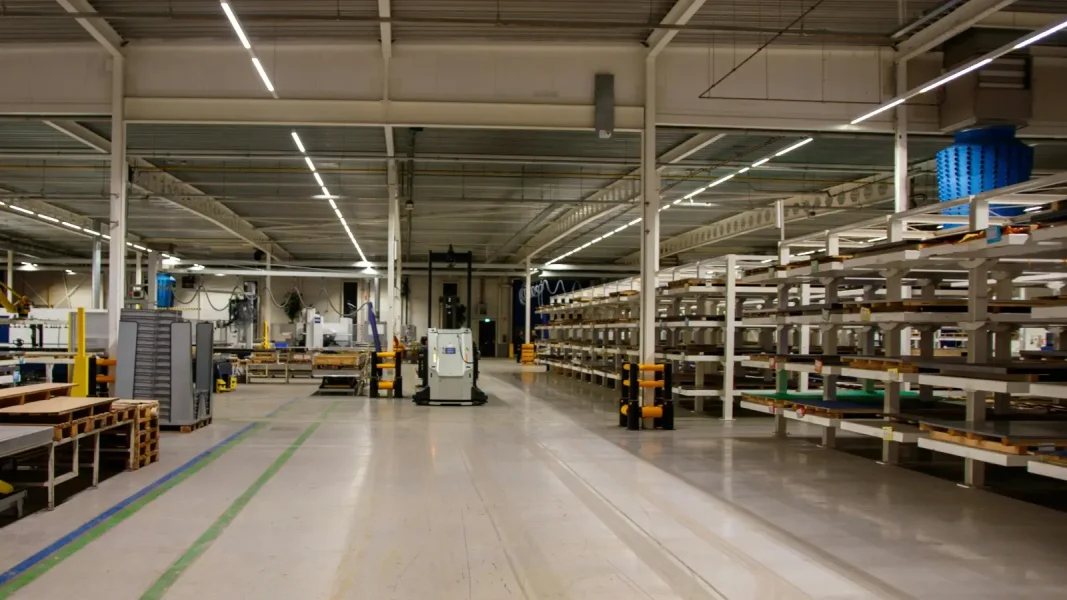Good inventory management can transform a company’s competitiveness. That’s why, in a context where market volatility, customer demands and operational constraints are multiplying, it’s essential to stock control represents a strategic strategic for every organization.
Inventory management is no longer just about storing goods. Thanks to new technologies such as automated systems, artificial intelligence such as automated systems, artificial intelligence and connected solutions, it has become a central element of the supply chain. These tools help optimize flows, improve traceability, accurately forecast demand, and adapt stock levels in real time.
This makes inventory management an essential lever for guaranteeing customer satisfaction, strengthening logistics performance and improving overall company profitability.
What are the risks of poor inventory management?
Poor inventory management can have serious financial and operational consequences. It leads to frequent out-of-stocks, which have a direct impact on service levels, commercial credibility and end-customer relations.
Moreover, it often leads to overstocking, resulting in excessive immobilization of working capital, loss of warehouse space, degradation of finished products or raw materials, and sometimes even premature obsolescence of items.
It also affects handling, replenishment and order-picking operations, unnecessarily burdening logistics teams. In addition, a lack of traceability makes it difficult to locate stored goods, increasing delivery errors, product returns and processing times.
This instability has a negative impact on production planning, goods transportation and coordination with logistics service providers, disrupting the entire supply chain. In short, uncontrolled inventory management leads to a global misalignment of logistics flows, reduces inventory reliability, and has a serious impact on the logistics implemented.
What challenges do companies face when it comes to inventory management?
1. Anticipate fluctuations in demand
Demand is unstable, influenced by promotions, external events or the weather. A rigid system can no longer meet the demands of the market. just in time.
2. Managing multi-channel logistics complexity
Between e-commerce flows, physical stores and logistics platforms, coordination is a challenge.
3. Improving traceability and visibility
A company can’t manage its inventory effectively without reliable traceability. This applies to raw materials, work-in-progress and shipments.
4. Reduce logistics footprint and improve sustainability
Poorly managed stock leads to waste, unnecessary transport, and therefore higher environmental costs.
5. Integrate operational constraints in real time
Scheduling, order-picking and routing decisions have to be taken quickly, taking into account all the constraints on the ground.
Optimix XFR: an intelligent solution to master the new challenges of inventory management
In an increasingly complex logistics environment, Optimix Forecasting and Replenishment- XFR has established itself as a strategic SaaS solution, designed to support companies in agile, high-performance, forward-looking inventory management.. A true decision-making co-pilot, it relies on predictive algorithms and continuous optimization mechanisms to anticipate variations in demand, limit the risks of shortages or overstocking, and adjust supplies in real time.
Connected to sales data, operational constraints and customer service objectives, XFR synchronizes all logistics flows – warehouses, points of sale, e-commerce – while guaranteeing precise traceability of stock movements.
Its recommendation engine supports users in their replenishment and destocking decisions, by integrating essential logistical parameters: storage capacity, supplier lead times, CSR commitments, etc. By automating these complex decisions, the solution offers tangible gains in responsiveness, reliability and profitability, while contributing to more responsible logistics.
Intelligent inventory management for an agile supply chain
Inventory management has become a strategic pillar for companies wishing to optimize their logistics, improve profitability, increase agility and enhance customer satisfaction. Today, advanced solutions such as Optimix XFR offer the possibility of controlling procurement, reducing stock levels and precisely tracking every movement of goods.
The adoption of modern logistics software enables you to automate the most complex tasks, while organizing flows in a forward-looking way. By integrating the specific constraints of each business sector, these tools transform inventory management into an intelligent, responsive process. By placing data and operational needs at the heart of management, companies can make their supply chain a real driver of sustainable performance.





